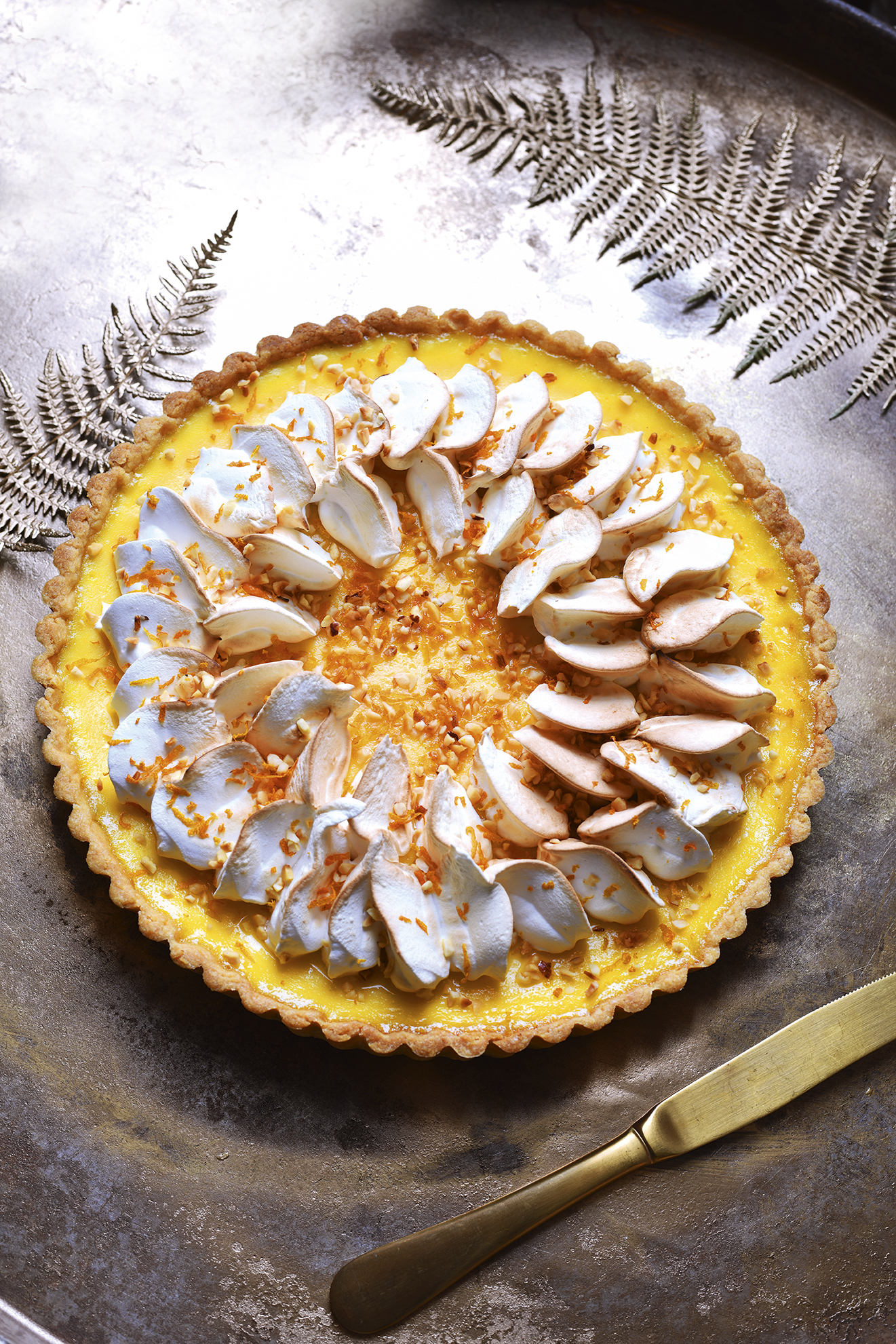Get Premium access to all the latest content online
Subscribe and view full print editions online... Subscribe
Serves 8-10 Desserts and puddings
Using a wooden spoon, beat the butter and sugar together until soft. Beat in the egg yolks, one at a time, beating until the sugar is no longer gritty and the mixture is stiff. Mix in the flour and almonds. Tip on to a sheet of cling film and bring the mixture into a ball. Flatten a little and wrap the cling film around it, then chill for around 30 minutes until the pastry has firmed up enough to roll easily.
Preheat the oven to 200C/180C F/Gas 6. Put a baking tray in the oven to heat up. Roll out the pastry, dusting with flour if need be, and use to line a 23cm fluted loose-bottomed 3cm deep tin. Press the pastry into the flutes and roll over the top with a rolling pin to trim off the excess pastry. Prick the base with a fork and chill for 10 minutes.
Line the tin with a circle of scrunched up baking paper cut to fit up the sides, then add baking or ceramic beans and bake blind for 20 minutes. Remove the beans and paper and bake for a further 5 minutes. Brush with the egg white to seal the pastry and bake for another 2 minutes until crisp and golden. Remove the tart, on its tray, from the oven and reduce the temperature to 160C/140C F/Gas 3.
Meanwhile, make the filling. Put the cream in a small pan. Break the eggs into a medium bowl with a pinch of salt and the sugar. Stir gently using a balloon/hand whisk to just break them up – you don’t want to make the mixture frothy. Stir in the lime and orange juice.
Heat the cream on a medium heat until bubbles just start to appear around the sides of the pan. Stirring gently with the whisk, add the hot cream to the egg mixture, a little at a time, to avoid scrambling the eggs.
While the pastry is still warm, pour the mixture into the tart shell until it is about 5mm from the top, then very carefully transfer to the oven. Bake for 25-30 minutes until just set. To avoid over cooking, keep checking every 10 minutes – as soon as the mixture has just a slight wobble in the middle when the tray is moved gently, it’s ready. Put aside to cool for about 20 minutes, then transfer in its tin to a wire rack to cool completely.
If eating right away or within 2 days, remove from the tin and put in a cool place while you finish the tart. If keeping longer than 2 days, store loosened but still in the tin in a cool place for up to 2 days.
To finish the tart, make the meringue topping. Put the sugar in a pan with 3tbsp boiling water. Set over a low heat and, once the sugar has dissolved to a clear syrup, increase the heat and boil to a temperature of 121C. If you don’t have a thermometer, boil for around 4 minutes but don’t let it start to caramelise – put the pan base briefly in a basin of cold water to stop it cooking.
Using electric beaters, whisk the whites with the cream of tartar until they leave a pattern in the foam, then gradually add the sugar syrup, whisking continuously. To speed up the process, put the base of the bowl in a large basin of cold water and whisk until tepid.
Put a saint Honoré nozzle of choice in a piping bag and add the meringue. Pipe near the outer edge of the tart, making 2 or 3 circles depending on your nozzle, leaving the middle of the tart exposed. Blow-torch the meringue to toast it. Mix the hazelnuts and orange zest together and scatter over the middle of the tart and some over the meringue.
Serve immediately or store in a cold place for up to 2 days and serve at room temperature.
This recipe was taken from the Christmas 2021 issue of Food and Travel. To subscribe, click here.

Advertisement
Subscribe and view full print editions online... Subscribe